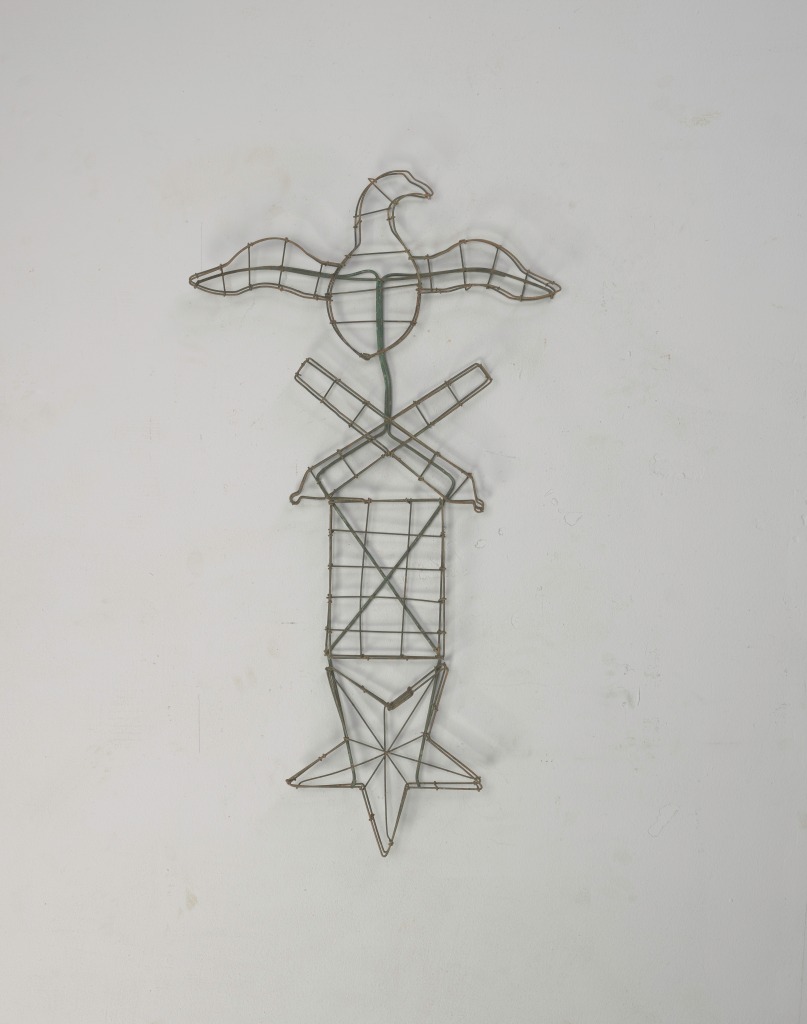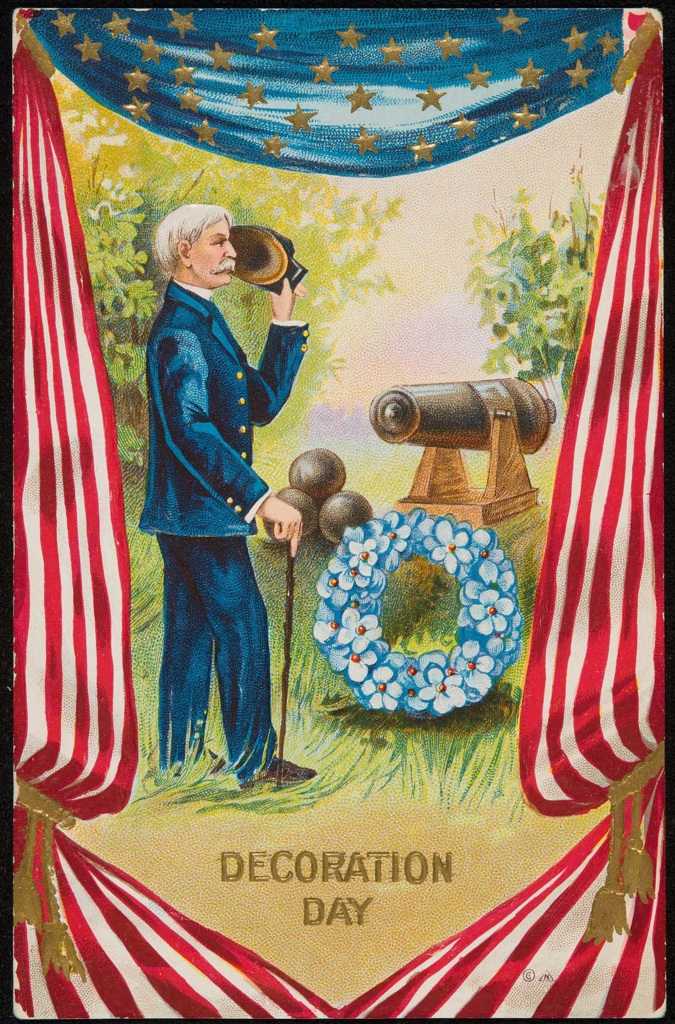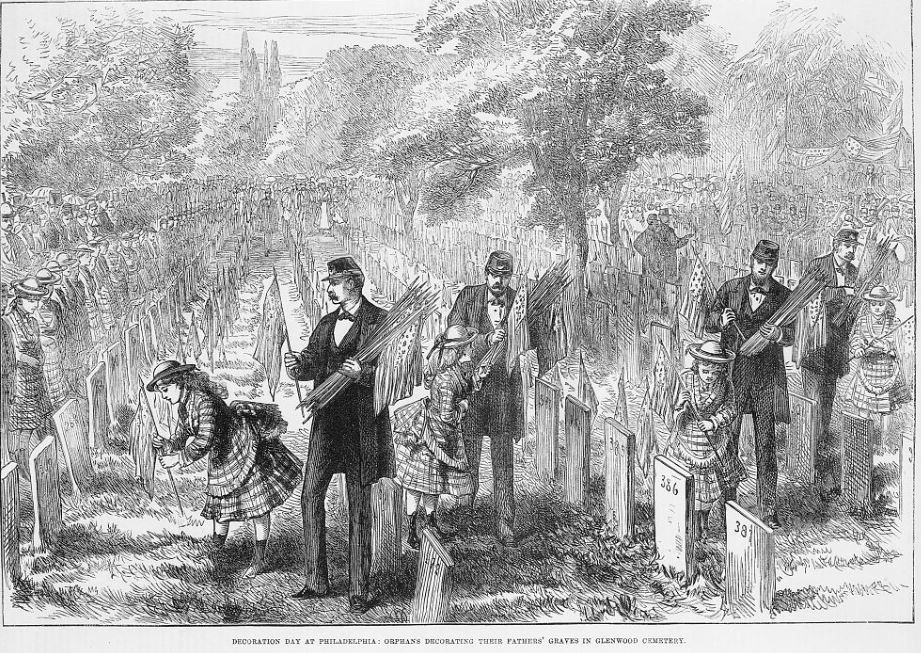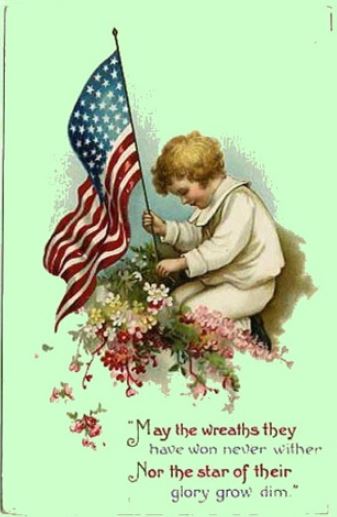
Wire frame for G.A.R. badge funeral flowers. https://www.si.edu/object/wire-frame-gar-badge:hac_1999.065
Memorial Day originally was called Decoration Day, from the practice of decorating the graves of fallen soldiers. It has been suggested that the date of the commemoration was originally chosen because fresh flowers would be readily available at the end of May. Fresh flowers were thought to be essential for decorating the graves; artificial flowers did not show the proper respect.

Trade journals for florists anxiously reported on shortages, such as this one in New York:
It was on Wednesday morning, May 29, that, after a period of unprecedented dullness, New York awoke to the fact that the supply of flowers was entirely inadequate for the demands of Decoration day….The Thirty-fourth street market fairly swarmed with hungry buyers on Wednesday morning, all ready to scoop up at good prices, material that is never salable except on such an occasion as this. The failure of the usual supply of out-door material made a market for the green-house product, which was also in short supply and quickly left the wholesalers with little to sell except lily of the valley, which was present in unwieldy quantities, the outdoor crop being just in. Roses are of poor quality generally and there are many inferior carnations, which, excepting for the peculiar conditions above described, would stand little chance of a sale at any price.
The American Florist 1 June 1910: p. 1552

A short story found in over 100 newspapers c. 1895, titled “Tony’s Pretty Flowers,” tells of the denizens of Teckerdsville who, when a late spring led to a shortage of flowers, sent a young man to Detroit to purchase flowers for Decoration Day. It rained, and after the orators had stopped orating and the boxes of flowers were opened, they were found to be of sodden paper and wire. Tony had purchased paper flowers instead of natural ones. “They was so much cheaper,” he explained. The story ends with flags being substituted for flowers on the soldiers’ graves, “‘”But Teckerdsville never did and never will forgive him the sorry trick he played.”

Many cemeteries today have regulations prohibiting artificial flowers. These G.A.R. veterans were indignant to find wax imitations instead of fresh flowers on their comrades’ graves.
Elizabeth, N.J.
VETERANS OBJECT TO WAX FLOWERS.
Gen. J. Madison Drake, supervisor of soldiers’ and sailors’ graves for the board of free holders, is in trouble with the Grand Army men because he substituted wax flowers for natural blooms in decorating the graves of soldiers in Evergreen cemetery. When the veterans reached the cemetery Memorial day and found wax flowers, they were indignant. The imitations were torn up and thrown away. Afterward the veterans held an indignation meeting and prepared a letter of complaint to the board of free holders. Replying to the criticisms Gen. Drake says: “Everyone I have spoken with thought the flowers were fine. It may be that the whole country will adopt wax flowers instead of the natural article.”
The American Florist 4 June 1910: p. 925
Chris Woodyard is the author of A is for Arsenic: An ABC of Victorian Death, The Victorian Book of the Dead, The Ghost Wore Black, The Headless Horror, The Face in the Window, and the 7-volume Haunted Ohio series. She is also the chronicler of the adventures of that amiable murderess Mrs Daffodil in A Spot of Bother: Four Macabre Tales. The books are available in paperback and for Kindle. Indexes and fact sheets for all of these books may be found by searching hauntedohiobooks.com. Join her on FB at Haunted Ohio by Chris Woodyard or The Victorian Book of the Dead. And visit her newest blog, The Victorian Book of the Dead.